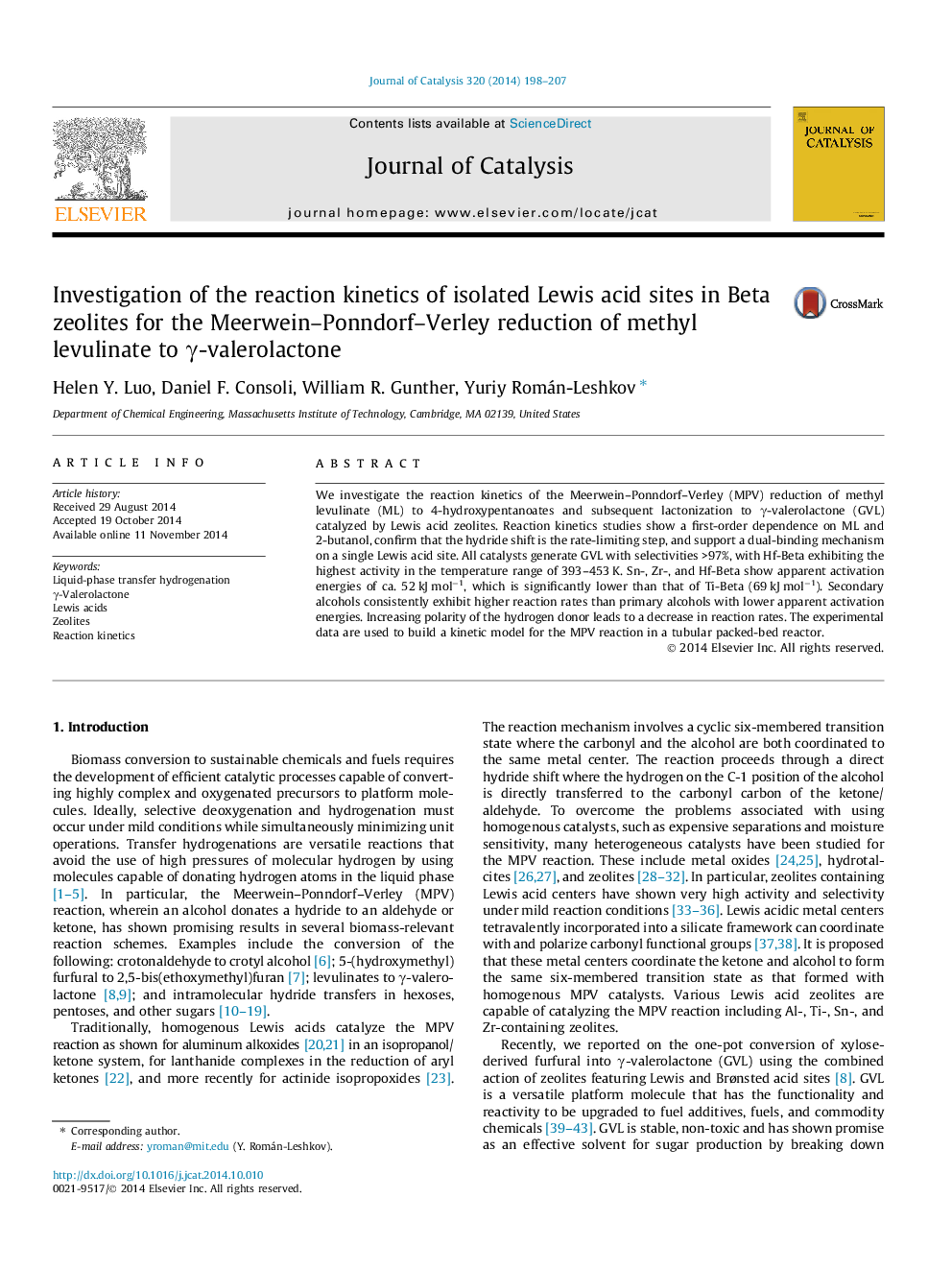| Article ID | Journal | Published Year | Pages | File Type |
|---|---|---|---|---|
| 60956 | Journal of Catalysis | 2014 | 10 Pages |
•Hf-Beta catalyzes the MPV reaction of levulinate with high activity and selectivity.•Kinetic studies support a dual-binding mechanism on a single Lewis acid site.•Activation energies and rates are quantified for Ti-, Sn-, Zr-, and Hf-Beta.•Reaction rates are affected by hydrogen donor connectivity and polarity.
We investigate the reaction kinetics of the Meerwein–Ponndorf–Verley (MPV) reduction of methyl levulinate (ML) to 4-hydroxypentanoates and subsequent lactonization to γ-valerolactone (GVL) catalyzed by Lewis acid zeolites. Reaction kinetics studies show a first-order dependence on ML and 2-butanol, confirm that the hydride shift is the rate-limiting step, and support a dual-binding mechanism on a single Lewis acid site. All catalysts generate GVL with selectivities >97%, with Hf-Beta exhibiting the highest activity in the temperature range of 393–453 K. Sn-, Zr-, and Hf-Beta show apparent activation energies of ca. 52 kJ mol−1, which is significantly lower than that of Ti-Beta (69 kJ mol−1). Secondary alcohols consistently exhibit higher reaction rates than primary alcohols with lower apparent activation energies. Increasing polarity of the hydrogen donor leads to a decrease in reaction rates. The experimental data are used to build a kinetic model for the MPV reaction in a tubular packed-bed reactor.
Graphical abstractFigure optionsDownload full-size imageDownload high-quality image (137 K)Download as PowerPoint slide
